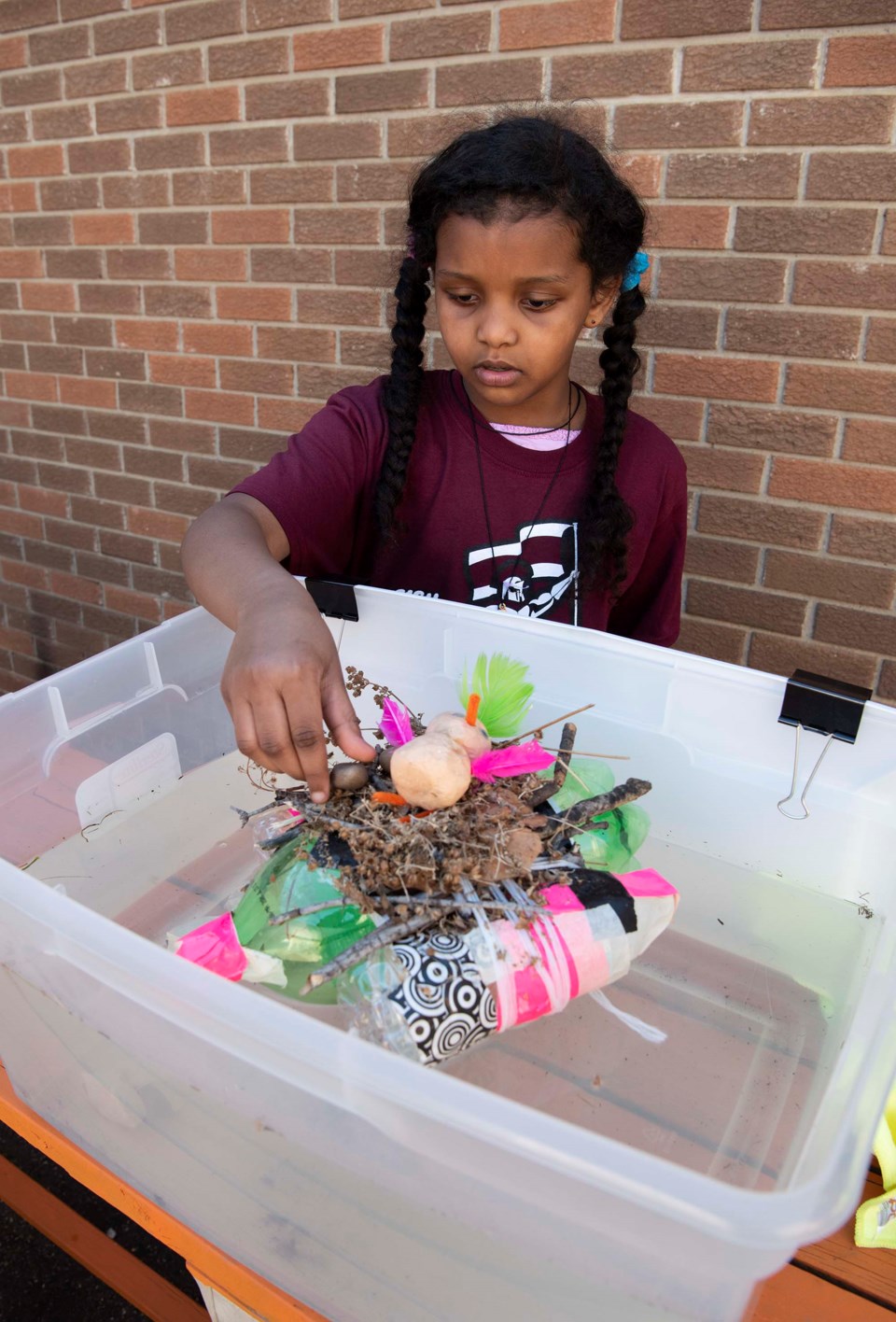While her teacher filmed her with a smartphone, Elmer S. Gish student Angela Lavallé carefully placed a googly-eyed Plasticine bird atop a handmade floating nest.
“One APEGA, two APEGA, three APEGA,” she counted, as she waited to see if the nest could take the weight.
Success! The bird was still high and dry, and her weeks of work had paid off.
Lavallé and her classmates were among the roughly 200 individuals and 240 classrooms competing in the 2021 APEGA Science Olympics this month. Organized by the Association of Professional Engineers and Geoscientists of Alberta, the Science Olympics challenge Grade 1-to-12 students to compete a variety of hands-on scientific challenges to inspire creativity, critical thought, and interest in engineering and geosciences.
APEGA usually holds in-person regional events for Science Olympics that involve an at-home project built in advance and mystery challenges on competition day, said APEGA outreach co-ordinator Keely McPhee. The Edmonton Science Olympics typically bring over a thousand people to the Butterdome.
APEGA had switched to a single online-only event for the whole province this year as the province had banned mass gatherings during the pandemic, McPhee said. (The Edmonton event typically drew 1,000 students to the Butterdome, for example.) It had also waived the usual entry fee and allowed competitors to register as classrooms or individuals. This year's event would have competitors build a device to solve a specific real-world problem, which judges evaluating those solutions by video. Teams that scored high enough would earn medals.
Teams received instructions for their events March 1 and had until May 20 to submit their video entries, McPhee said. Results would be announced this June.
Science squads
Elmer S. Gish teacher Melissa Zawaduk said her Grade 3 class had 15 teams competing in the Olympics.
"I’m always looking for things that will help (students) connect with nature,” she said, and that make school more enjoyable — and in a year where school clubs were on hold due to the pandemic, Science Olympics were one of the few extra activities she could offer.
Zawaduk said Grade 3 competitors had to build a floating bird’s nest out of natural and/or recyclable materials which could support a simulated bird and bird’s eggs for roughly three seconds (three “APEGAs”).
Lavallé said she took up the Olympic challenge because it sounded fun and she liked building stuff. While most of her classmates used pop-bottle pontoons for their nests, she went with a round cork board, resulting in an unusually flat nest. She added flowers to the top to make it more attractive to birds, but said she wasn’t sure if a bird would actually prefer it to one it made itself.
Paul Kane had three teams entered in this year’s Olympics, said Chemistry teacher Michael Ng. Their task was to create a contactless delivery system that used potential or kinetic energy.
Stuti Mankotia and Lauren Friesen said their team was building a cart which would use gears, chains, pulleys, and counterweights to roll to its destination and, in theory, roll itself back when its package was removed.
“We don’t know how fast it’s going to go or if it will even work,” Friesen said, as the counterweight calculations would likely prove complex.
Christopher Chin and his team were constructing a foldable ramp you could hold up and slide a package down. While they had considered just throwing the package, the event’s rules specified that the package had to arrive intact.
“The safest way to do it was with this ramp,” Chin said.
Chin and Mankotia said the pandemic had added additional hurdles to this year’s Olympics. Chin had two teammates who were learning from home, for example, so they could only participate by phone. Mankotia’s squad struggled to find the gears they needed, as the pandemic had caused a regional shortage of bikes and bike parts — the city's recycling depot had just three bikes on hand, in contrast to the usual dozens.
Friesen and her teammates said Science Olympics gave them a chance to have fun with friends and physics.
“I’d rather build something than sit and watch TV,” she said.
Teams have until April 29 to enter the Science Olympics. Visit bit.ly/3ssmjj0 for details.




